Healthy hedgerows do it better
Hedgerows are the green veins running through our countryside, and with over 70% land in agricultural use, one of the most important habitats we have. They offer home, food, shelter and corridors to a remarkable number of species, with one study by Robert Wolton counting 2070 different species in just 85m of hedgerow!
Even if wildlife wasn’t your thing, having a healthy network of hedgerows would still be in our best interest as they provide so many additional benefits to us environmentally – carbon sequestration, flood prevention, pollution absorption etc. They offer great benefits to farming too – shelter, shade, species-rich browse and biosecurity for high animal welfare livestock farming, as well as wind shelter, pollinators, pest control and soil erosion reduction in arable farming.
In fact, whatever you value your hedgerows for, healthy hedgerows do it better.
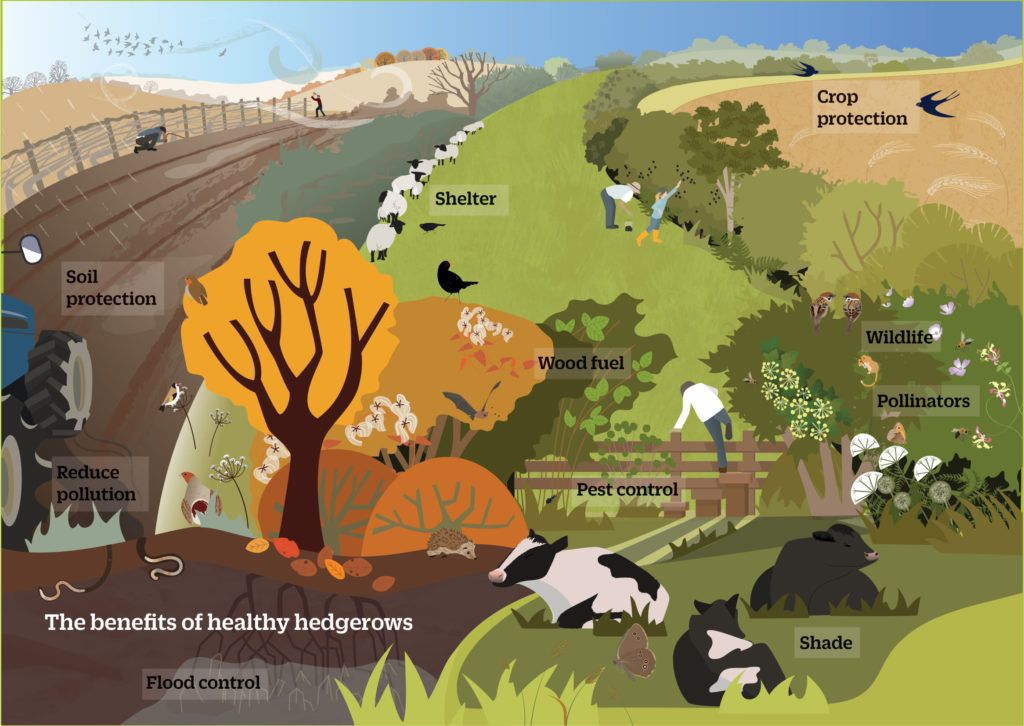
Hedgerows require careful management
But hedgerows need to be managed in a certain way to live up to all their potential, and even to survive in the long term. Whilst it’s true that many of our hedges are managed too heavily, trimmed to the same height too often, the opposite approach to hedges can be just as damaging to their chances of survival. Hedges are a man-made habitat that do require some management to prevent their structural decline and eventual loss.
In fact, the structure and quality of hedgerows will always deteriorate if they are managed in the same way for too long, whether this is annual cutting at the same height, or not cutting at all. They are at their best when managed according to their lifecycle.
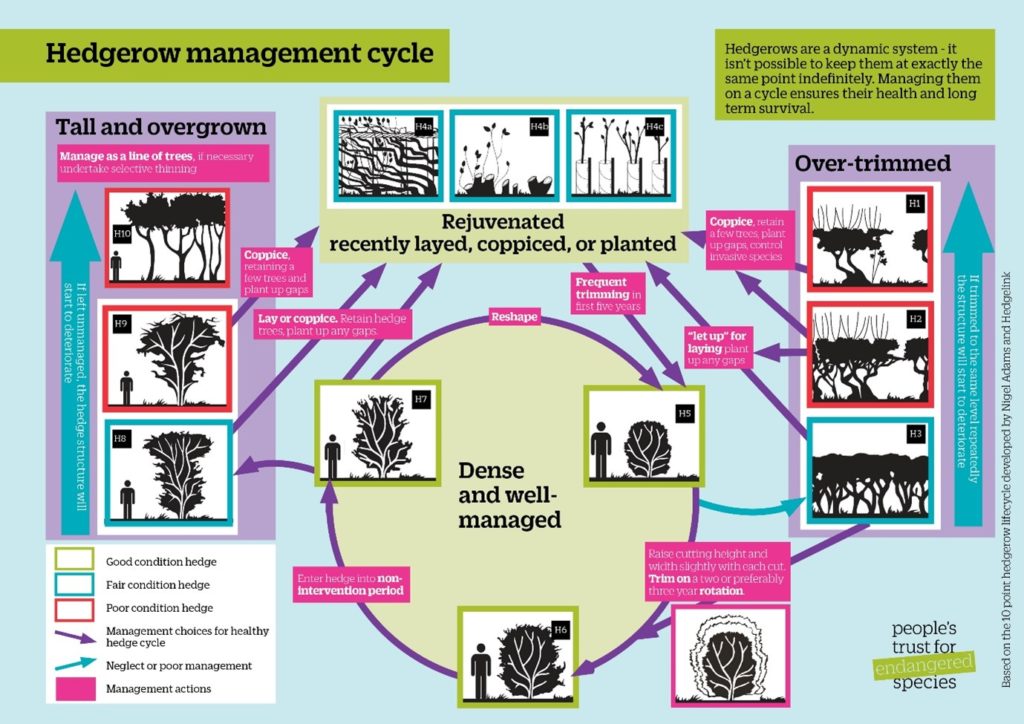
This lifecycle keeps hedgerows in the valuable habitat structure that makes them such a useful asset to us and to wildlife. It effectively helps hedgerows mimic the pre-agricultural wildwood that so much of our ecology adapted to; the almost magic combination of open-grown trees, flowering/fruiting scrub and grazed pasture. And this is partly the reason behind their immense wildlife value.
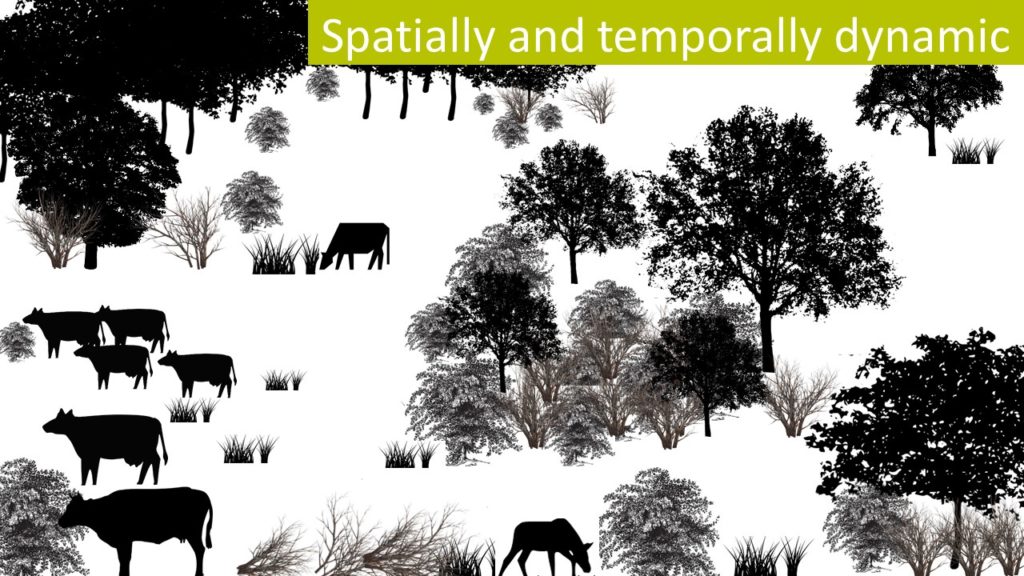
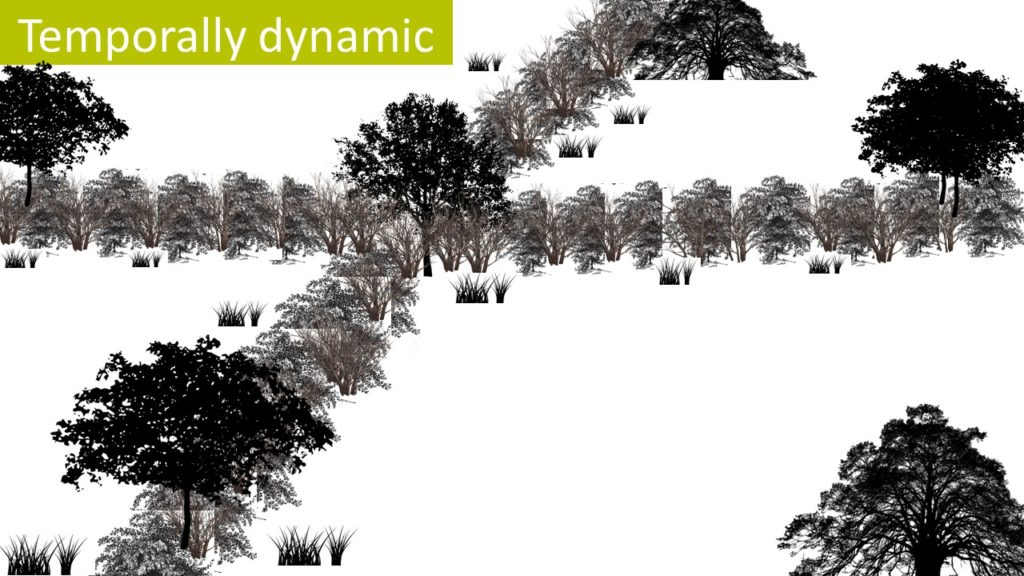
Wildlife thrives in this woodland edge habitat
When you look at it closely, a large proportion of our wildlife thrives in this ‘woodland edge’ habitat structure, which contains overlapping elements of woodland, flowering scrub, and grassland. And hedgerows certainly don’t replicate any of these habitats fully, they are capable of supporting many species from each of them. Like, 80% of what we would normally call woodland bird species.
For some species, this combination is greater than the sum of its parts, as some are dependent on more than one, or even elements of all three of these.
A song thrush will sing from hedge trees, nest in the dense hedge structure, feed on snails and worms from the hedge base, especially any wet ditches before moving on to hedge berries later in the year.
A dormouse will feed from the flowering and fruiting scrub plants, but also on ash keys and insects from hedgerow trees. It will weave breeding nests in the protection of the scrubby structure of the hedge itself, but then make winter hibernation nests at ground level, perhaps in the tussocky grass of the hedge base.
Brown hairstreak butterflies lay eggs on the young blackthorn stems, use the sheltered side of a hedge to gain the body temperature to fly, and then congregate around hedgerow trees to mate.
Dead-wood dependent beetles, now increasingly rare, require the deadwood at the centre of old trees as larvae, then feed on the flowers of hawthorn, and other scrub and pasture species such or of elder or hogweed when they emerge as adults.
Even many that are classified as ‘woodland species’, you’ll tend to find more frequently in glades, rides, or woodland edges where this ‘woodland edge’ structure, mimicked by hedgerows, can be found. Of course in our pre-agricultural wildwood, the movement and disturbance caused by herds of large herbivores kept this dynamic habitat in the flux, maintaining this valuable structure in various points of succession. But hedgerow management has traditionally always filled this role in our agricultural systems.
To keep a hedge at this valuable point of its successionary journey requires different management at different points of its life. There’s a time to develop structure, to maintain shape, to ease off and let it breathe. And there must also always be a time to rejuvenate a hedge to re-start this cycle. It’s managing hedges according to this cycle that effectively immortalises them; it gives lifespan after lifespan like no other form of management can.
There’s an app for that
By virtue of using hand tools for cutting, hedges have effectively been managed on a cycle of rejuvenation for hundreds of years. But we have seen a lot of changes to the way we manage hedges in the last century. And while hedges coped with this for a while, the long-term structural damage is evident. The last Countryside Survey showed that only 48% of hedges nationwide remain in good structural health.
Luckily the lifecycle can show us not only how to manage our hedges to keep them healthy, but also offers us a way of bringing poor hedges back into good healthy. There is hope and opportunity for any hedge condition as long as you follow this approach.
We now have the opportunity to combine traditional methods with new insights and modern tools. We’re not talking about a return to hand tools, but instead tweaking the ways in which we use the tools we have.
To help share and encourage use of this traditional management approach, PTES created Healthy Hedgerows, a free hedge management app designed specifically for farmers. It’s quick and simple to use, and gives instant management advice for each hedge surveyed.
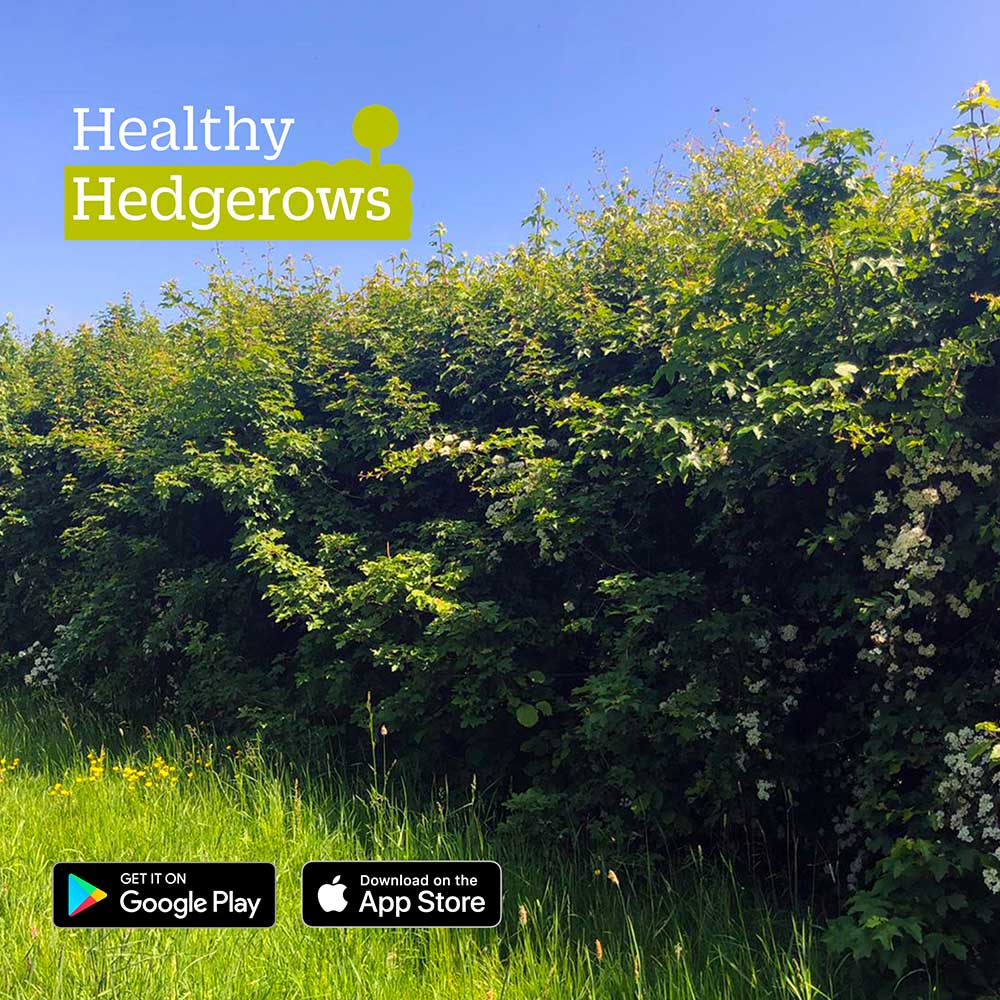
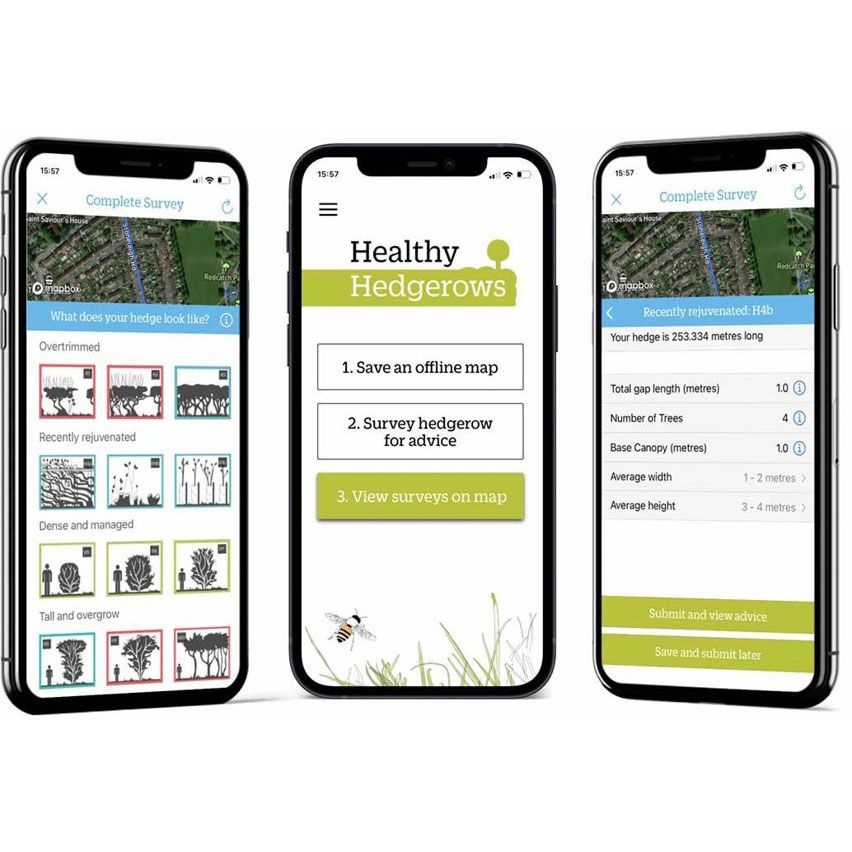
While it might be easy to apply the hedge lifecycle to one or two hedges; to do this across a whole farm is more difficult. Which is where the speed and simplicity of Healthy Hedgerows comes in. It takes just six questions for this app to understand where in the lifecycle each hedge is and deliver management advice accordingly. This makes it entirely possible for busy farmers, to update their hedge management plans across a whole farm.
Hedges have been with us since the bronze age, and persist thanks to an unbroken chain of care, management and periodic rejuvenation. Each hedge carefully managed from generation to generation, farmer to farmer, through the centuries. The privilege of caring for them, and the responsibility of ensuring they have a healthy future now falls to us. We write the next chapter in their history books, and it’s in our power to make it a good one.
Find more information and download the FREE Healthy Hedgerows app here:
Lead image by Megan Gimber
